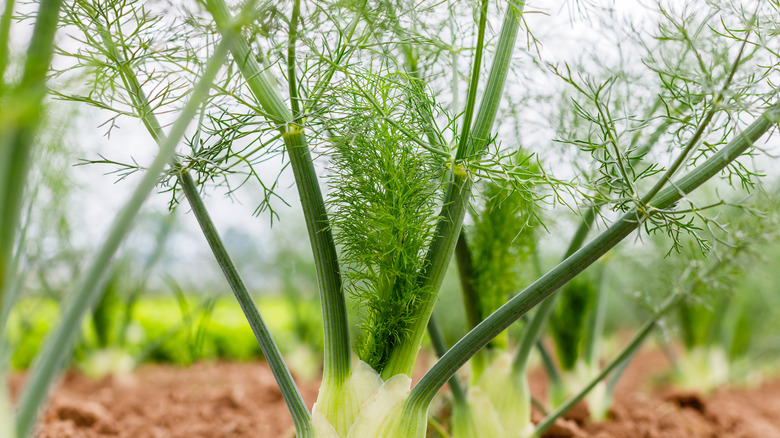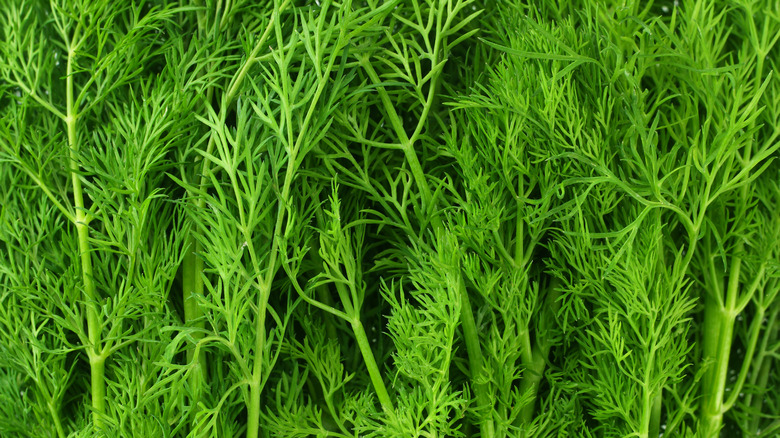The Real Difference Between Fennel And Dill
Dill and fennel are both used in many European and Asian cuisines. Their leaves may look similar, but when it comes to taste, they are quite different.
Fennel is an extremely versatile plant when it comes to cooking. The bulb of the plant is often roasted (via The Food Network), the seeds can be used in spice mixes or as a breath freshener (via VerMints) and the leaves are used as a garnish in cooked dishes, or as a salad.
Although the leaves are similar to the structure and daintiness of dill, the flavor they impart is quite different (via Masterclass). As with all parts of the plant, fennel leaves taste a lot like licorice. The licorice flavor is strong and is one that many people either love it or hate it — there seems not to be much of an in between.
Though it shares a flavor profile with anise (via Today), fennel is actually in the same family as the carrot. While one varietal of the plant (herb fennel) is treated like an... herb, prized for its leaves, another varietal (Florence fennel) is grown for its root, and is considered more of a vegetable (via University of Illinois).
The characteristics of dill
Dill is known for its pungent smell — in Latin, the second half of its scientific name, Anthem graveolens, literally means "heavy scented" (via Richters). With delicate and thin leaves, dill tends to wilt quickly. However, the herb can be dried for use – you've likely seen it in the spice aisle of the grocery store. It's popularly used with potatoes, especially in potato salad, and is (obviously) one of the main flavoring components of dill pickles. Dill belongs to the same family as celery and parsley. It's extremely popular in Scandinavian cooking and is used atop salmon frequently (via Salmon From Norway).
As far as taste goes, it shares the same faint sweetness as fennel, but it has more of an herbal, grassy flavor without the intense licorice flavor. Similar to fennel, the seeds of the plant are used as a spice as well.

